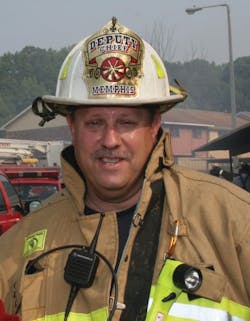A few years ago, I was hired by an attorney outside Chicago to help him defend a fire department being sued after its personnel had pronounced a man dead as a result of a car accident, but some 45 minutes later, it was discovered the “dead” man was still alive.
It all happened in the early-morning hours on an interstate highway in a community just outside of Chicago, after three teenagers were involved in a head-on collision with a car with a single occupant. The driver of the car with the single occupant entered the highway via an exit ramp instead of an entrance ramp and found himself speeding down the highway in the wrong direction toward the car with the three teenagers. The evitable happened – a frontal impact of the cars at high speed.
subhead
Frontal impacts at high speed usually do not have good outcomes for the occupants. That was the case here. The two teenagers in the front seat died and it appeared as though the teenager in the rear seat also died.
Multiple first responders had looked for a pulse or respirations on all three victims, but found none. EKG monitors were hooked up to the victims to look for any sign of electrical activity in the heart. Nothing was found. By chance, a second EKG monitor was hooked up to the teenager in the rear seat and it showed flat line. It was very cold that early morning and no moisture was seen coming from any of the teenagers’ mouths during the evaluations, and there was no rise and fall of the chest.
The bodies were left in the car so that the Illinois State Highway Patrol accident reconstruction team could take photographs and measurements and generally process the scene. However, some 45 minutes later, while the highway patrol officers were writing down their information and taking measurements, a tow-truck driver who was waiting to tow the cars away looked at the teenager in the back seat of the car and noticed that he was breathing. He was unconscious, but breath could be seen coming from his mouth. He was immediately removed from the vehicle, stabilized and transported to a trauma center. He survives today.
I saw this one other time, in the early 1980s, when I worked in St. Louis, but it was not like the teenager in the car wreck. In this case, a medic pronounced a person dead, but did not do a thorough examination of the patient. He merely checked her for a radial pulse. She looked blue, her extremities were stiff and she was cold. Later, however, she was discovered to be alive at the morgue. It turns out she was in a cold apartment and was suffering from hypothermia. Her hypothermic condition made her cold to the touch and produced her cyanosis and stiff extremities. The medic took the lazy way out and never hooked up the patient to a monitor.
Do an Internet search for paramedics who have pronounced people dead, but who were later found to be alive, and several stories can be found. One 2010 story talks about two such incidents occurring in Prince George’s County, MD, within the same year.
Can people “come back from the dead” after we have pronounced them dead or worked them as a cardiac arrest to no avail? From everything I researched, it looks like it may be possible, but there is no medical explanation. Ironically, I had read a book titled 90 Minutes in Heaven just before I was hired for the case outside Chicago. In the book, Don Piper describes how he was declared dead at an accident scene after his car was crushed by a tractor-trailer truck. He describes what he says were the 90 minutes he spent in heaven before returning to life.
A story this summer out of Ohio that made national news centered on a 37-year-old man who suffered cardiac arrest for 50 minutes and was flat line when the doctor at the hospital decided to call the code. While the man was lying there, still hooked up to the EKG monitor, he started with slow electrical activity that kept increasing and the hospital staff decided to resume resuscitation. Eventually, he was resuscitated and is neurologically intact today.
It is imperative as EMTs and paramedics that whenever we are called to a death, or decide to terminate resuscitation efforts, we document everything well, including the absence of pulses, no breathing and no electrical activity in the heart with an EKG tracing. Other important documentation points include dilated and non-reactive pupils. If it appears someone has been dead for a while, include rigor mortis, dependent lividity, decomposition and incineration and document the last time the patient was seen.
Only through careful assessment of the patient and good documentation can you prevent the embarrassment of declaring someone dead who later proved to be alive. And if you did everything you were supposed to do if they were dead and they still came back to life – God only knows!
For more news and training on EMS, visit http://EMSWorld.com/.
GARY LUDWIG, a Firehouse® contributing editor, has 35 years of fire, rescue and EMS experience. He currently serves as a deputy fire chief for the Memphis, TN, Fire Department. Ludwig is also chair of the EMS Section for the International Association of Fire Chiefs. He can be reached through his website at garyludwig.com.
About the Author
Gary Ludwig
GARY LUDWIG has served in three fire departments over his career: St. Louis, Memphis, and Champaign, IL. His fire, EMS and rescue career spanned a total of 46 years, and he has been a paramedic for over 44 years. Ludwig served as president of the International Association of Fire Chiefs in 2019-20. He has a Master’s degree in Business and Management, has written over 500 articles for professional fire and EMS publications and is the author of seven books.
Connect with Gary
Email: [email protected]
Facebook: Gary Ludwig
Twitter: @ChiefGaryLudwig
Website: garyludwig.com

